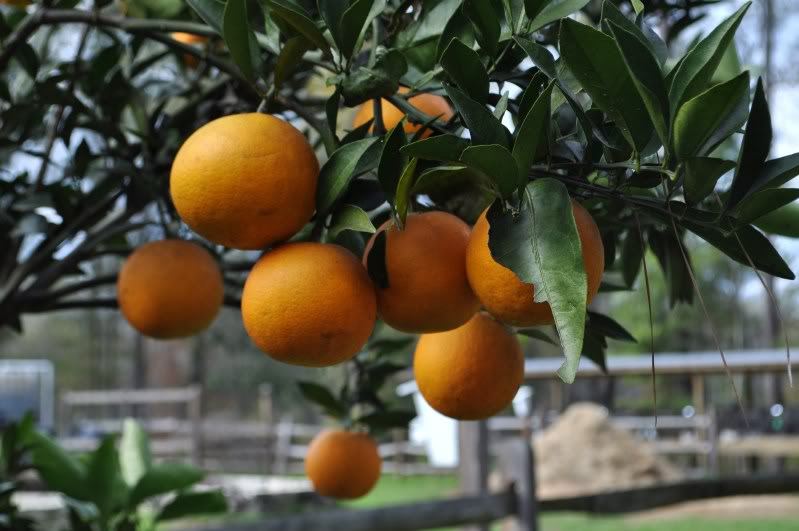And We'll Pretend that He is Parson Brown....
Thursday, December 29, 2011
Okay, so what's up with calling a snowman 'Parson Brown'?
It's that lull between Christmas and New Year's when the vital signs of corporate America drop to an anemic, thready pulse. But, chickens don't read calendars and cows never go on vacation so farm life rolls on. It's been an unusually mild winter in North Florida. We've had one glancing freeze; that's it. It leveled the banana plants but barely caused a shiver in the citrus trees. Today I took this picture of our Parson Brown oranges.

Like all agricultural products and interesting people, Parson Browns have a history. Parson Brown oranges were developed in Florida shortly after the Civil War, and they trace their lineage to a single tree cultivated by the parson himself and later sold to a fruit entrepreneur named Captain J.L. Carney for the scandalously high price of $80. Upon this tree the modern commercial orange industry was launched in Florida, and Parson Browns became famous for their delicious, sweet flavor. They had their moment in Florida's agricultural history but later were supplanted by more modern commercial varieties.
A few years ago nobody would have thought to be raising Parson Browns a mere ten-minute drive from the Georgia border, but at Greenfire Farms we have two things working in our favor: a great local plant nursery called Just Fruits in Medart, Florida, and climate change. Just Fruits has been around for decades, and they specialize in fruit trees of a stunning variety grown specifically for this climate. The fruitmeisters at Just Fruits are geniuses at their art, and with a pickup truck and a little cash you can walk away with an olive grove, a vineyard, an apple orchard, about a dozen varieties of peaches, or flora as beautiful and tasty as mulberry trees and kiwi vines. Over the years we've planted dozens of fruit varieties, and now in almost any given month you can cruise around the farm and grab handfuls of rich and delicious fruits like Asian pears, apples, key limes, grapes, mulberries, and blackberries.
As for climate change, the other day I had a fascinating conversation with Dr. Thomas Barnett, a Harvard educated Megamind-type who orchestrates global strategic analyses for some of the world's most powerful governments and corporations. (Despite the intimidating CV he's a fun guy with whom to hoist a beer.) You can read one of his analyses here. Dr. Barnett believes that the resource wars of the 21st Century will be fought over food, not oil, and the smart play is to buy good farmland in the northern United States and southern Canada where global warming is opening up fertile prairie for larger grain harvests. I can't say whether his predictions will be accurate, but I can say in support of his general theory that on New Year's day I will have about 500 key limes ripening on trees could not have easily survived the cold winters here a couple of decades ago.
Dr. Barnett and Parson Brown oranges each in their own way remind us to hold close our agricultural heritage. When will we once again call into service the exotic and valuable genetic gifts of our livestock on Greenfire Farms? They're not quaint artifacts of a slowly receding past. They're the quickening pulse of a rapidly changing future.
Around every circle another circle can be drawn. Under every deep another deep opens.
(Apologies to Ralph Waldo Emerson.)

 Cart:
Cart: 

